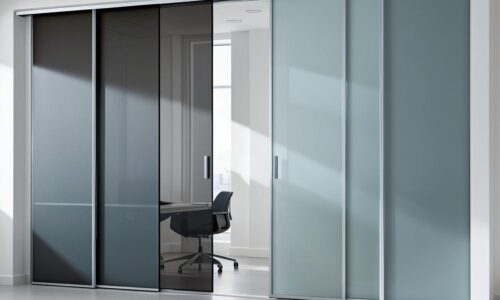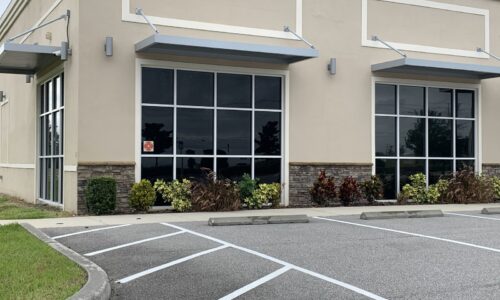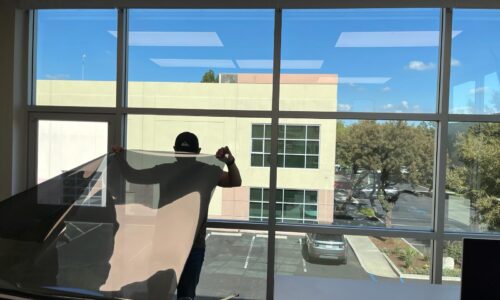Welcome to our comprehensive guide on window tint and its lifespan. If you’ve ever wondered how long window tint lasts or what factors can affect its longevity, you’ve come to the right place. In this article, we will delve into the details of window tint, discuss the average lifespan, signs of deterioration, maintenance tips, and more. Whether you’re a car owner or a homeowner considering window tinting, this guide will provide you with the necessary information to make informed decisions.
Also Read: What Percentage of Window Tint Home is Best
Understanding Window Tint
Before we explore the lifespan of window tint, it’s important to have a basic understanding of what window tint is and how it works. Window tint is a thin film or laminate that is applied to the interior surface of windows. It is designed to reduce the amount of sunlight, heat, and harmful UV rays that enter a vehicle or building, providing various benefits such as increased privacy, improved energy efficiency, and protection against fading.
The Science Behind Window Tint
Window tint is typically made of polyester film infused with dyes, pigments, or metallic particles. These materials help to absorb or reflect sunlight, reducing its intensity and preventing it from penetrating through the glass. The darkness of the tint is measured by its visible light transmission (VLT) percentage, which indicates the amount of light allowed to pass through. The lower the VLT percentage, the darker the tint.

Types of Window Tint
There are several types of window tint available in the market, each with its own unique properties and characteristics. Some common types include:
Dyed Window Tint
Dyed window tint consists of multiple layers, with a layer of dye sandwiched between an adhesive layer and a protective top coat. The dye absorbs solar energy, reducing heat and glare. It also provides some level of privacy by darkening the windows. However, dyed window tint does not offer as much heat rejection as other types.
Metalized Window Tint
Metalized window tint contains metallic particles that reflect heat and block UV rays. These particles create a shiny appearance and offer better heat rejection compared to dyed tint. Metalized tint also provides added strength to the window glass and can enhance the overall security of the vehicle or building.
Carbon Window Tint
Carbon window tint incorporates carbon particles into the film, which gives it a matte, black appearance. This type of tint offers excellent heat rejection, reduces glare, and does not interfere with electronic signals. Carbon tint is also less likely to fade over time compared to dyed or metalized tint.

Ceramic Window Tint
Ceramic window tint is considered the premium option in terms of heat rejection and clarity. It is made using ceramic nanoparticles that are non-metallic and non-conductive. Ceramic tint allows for maximum visibility while still blocking UV rays and reducing heat. It is highly durable and less prone to fading or discoloration.
Factors Affecting Window Tint Lifespan
The lifespan of window tint can vary depending on various factors. Understanding these factors can help you make informed decisions when selecting window tint and maintaining its longevity.
Quality of the Tint
The quality of the window tint itself plays a significant role in its lifespan. High-quality tints are often made with superior materials and advanced manufacturing techniques, making them more durable and long-lasting. It is advisable to invest in reputable brands and products known for their quality.
Installation Quality
The installation process is crucial in determining how well the window tint adheres to the glass surface. Proper installation by experienced professionals ensures that the tint is applied smoothly without any bubbles, creases, or peeling edges. A poorly installed tint may deteriorate prematurely and require early replacement.
Climate and Environment
The climate and environmental conditions in which the window tint is exposed can impact its lifespan. Regions with extreme heat, intense sunlight, or high humidity levels can accelerate the deterioration of window tint. Similarly, exposure to saltwater or pollutants can also affect the longevity of the tint.
Maintenance and Care
Regular maintenance and proper care can significantly extend the lifespan of window tint. Cleaning the tinted windows with gentle, non-abrasive solutions and soft cloths helps to prevent scratches and preserve the tint’s appearance. Avoid using ammonia-based cleaners or sharp objects that can damage the tint.
Type of Glass
The type of glass on which the tint is applied can influence its durability. Different types of glass have varying heat absorption and expansion rates, which may affect the performance and lifespan of the tint. It’s important to consult with professionals to ensure compatibility between the tint and the glass.
The Average Lifespan of Window Tint
The average lifespan of window tint can range from 5 to 10 years or more, depending on the factors mentioned above. High-quality tints installed correctly and maintained properly can last closer to the upper end of this range. However, it’s essential to note that these are general estimates, and individual experiences may vary.
It’s also important to consider that the lifespan of window tint can be influenced by the type of application. Automotive window tint, for example, may have different longevity compared to residential or commercial window tint due to varying exposure and usage patterns.
Signs of Window Tint Deterioration
Over time, window tint may show signs of deterioration. It’s important to recognize these signs to determine when it’s necessary to replace the tint. Some common signs of window tint deterioration include:
- Fading: Window tint may fade or change color over time, especially when exposed to excessive sunlight or UV rays. Fading tint not only looks aesthetically displeasing but may also indicate a loss in performance.
- Bubbling and Peeling: If you notice bubbles or areas where the tint is peeling away from the glass, it’s a clear indication that the tint has deteriorated. Bubbling and peeling can occur due to improper installation, exposure to heat, or aging.
- Scratches and Damage: Scratches and physical damage to the window tint can compromise its functionality and appearance. Harsh cleaning methods or contact with abrasive materials can cause scratches. Damaged tint should be replaced to maintain its effectiveness.
- Hazy or Cloudy Appearance: As window tint ages, it may develop a hazy or cloudy appearance, reducing visibility and detracting from its original purpose. This can occur due to degradation of the tint materials or improper care.
If you notice any of these signs, it’s advisable to consult a professional window tinting service to assess the condition of the tint and recommend appropriate solutions.
Extending the Lifespan of Window Tint
While the lifespan of window tint is influenced by various factors, there are steps you can take to prolong its durability and effectiveness. Follow these tips to extend the lifespan of your window tint:
- Choose High-Quality Tint: Invest in high-quality window tint from reputable brands that offer superior durability and performance.
- Professional Installation: Ensure that the tint is installed by experienced professionals who follow proper techniques and use high-quality adhesives.
- Follow Manufacturer’s Recommendations: Adhere to the manufacturer’s guidelines for cleaning, maintenance, and care to prevent damage and preserve the tint’s appearance.
- Use Recommended Cleaning Products: Clean the tinted windows using gentle, non-abrasive cleaning solutions specifically designed for window tint.
- Avoid Sharp Objects: Refrain from using sharp objects or abrasive materials that can scratch or damage the tint. Use soft cloths or microfiber towels for cleaning.
- Protect from Direct Sunlight: Whenever possible, park your vehicle in shaded areas or use sunshades to minimize direct exposure to sunlight, which can accelerate tint fading.
- Consider UV-Protective Films: Applying additional UV-protective films over the window tint can provide extra protection against UV radiation, reducing its impact on the tint.
- Regular Inspection: Periodically inspect the window tint for any signs of deterioration. Early detection of issues allows for timely maintenance or replacement.
By following these measures, you can optimize the lifespan of your window tint and enjoy its benefits for an extended period.
Frequently Asked Questions
How long does window tint last on a car?
The lifespan of window tint on a car can range from 5 to 10 years or more, depending on factors such as quality, installation, climate, and maintenance.
Can window tint be repaired or replaced?
In most cases, damaged or deteriorated window tint needs to be replaced. While minor scratches or imperfections can sometimes be repaired, extensive damage or bubbling often requires the replacement of the tint.
Does the type of window tint affect its longevity?
Yes, the type of window tint can affect its longevity. Higher-quality tints, such as ceramic or carbon tint, are generally more durable and long-lasting compared to dyed or low-quality tints.
Is it normal for window tint to fade over time?
Yes, it is normal for window tint to fade over time, especially when exposed to sunlight or UV rays. However, high-quality tints are designed to resist fading and maintain their performance for a longer duration.
Can window tint bubble or peel?
Yes, window tint can develop bubbles or peel if not installed properly or if exposed to extreme heat or other damaging conditions. Professional installation and regular maintenance can help prevent bubbling or peeling.
How often should window tint be maintained?
Window tint should be maintained regularly to ensure its longevity. It’s recommended to clean the tinted windows every few weeks using gentle cleaning solutions and soft cloths.
Can window tint be applied to any type of window?
Window tint can be applied to various types of windows, including those in cars, homes, and commercial buildings. However, specific regulations and limitations may apply depending on local laws and restrictions.
Does window tint offer any additional benefits?
Yes, window tint offers several additional benefits, such as increased privacy, reduced glare, improved energy efficiency, protection against UV rays, and enhanced aesthetics.
Is it necessary to hire a professional for window tint installation?
While DIY window tint kits are available, it’s generally recommended to hire a professional for window tint installation. Professionals have the expertise and tools to ensure proper installation and optimal performance.
Can window tint affect visibility at night?
When properly installed, window tint should not significantly affect visibility at night. However, extremely dark tints or improper installation may reduce visibility, especially in low-light conditions.
How does climate affect the lifespan of window tint?
Climate can impact the lifespan of window tint. Extreme heat, intense sunlight, high humidity, and harsh weather conditions can accelerate the deterioration of tint, potentially shortening its lifespan
Are there any legal restrictions on window tint darkness?
Yes, legal restrictions on window tint darkness vary by jurisdiction. It’s important to familiarize yourself with local regulations to ensure compliance with the law.
Can window tint be removed?
Yes, window tint can be removed. Professional tint removal services use specialized techniques and tools to safely remove the tint without damaging the glass.
What are the cost considerations for window tint installation?
The cost of window tint installation can vary depending on factors such as the size of the windows, type of tint, complexity of the installation, and location. It’s recommended to obtain quotes from reputable installers for accurate cost estimation.
Can window tint be applied to commercial buildings?
Yes, window tint can be applied to commercial buildings. Commercial window tint offers similar benefits as automotive or residential tint, such as energy efficiency, privacy, and UV protection.
Does window tint require any special maintenance?
Window tint does not require extensive maintenance. Regular cleaning using gentle solutions and avoiding harsh chemicals or abrasive materials is typically sufficient to keep the tint in good condition.
Can window tint help reduce energy costs?
Yes, window tint can help reduce energy costs by improving the energy efficiency of windows. It reduces heat transfer, which can lessen the reliance on air conditioning and contribute to energy savings.
Is it possible to customize the appearance of window tint?
Yes, there are customization options available for window tint, such as different tint darkness levels, colors, or patterns. These options can allow for personalized aesthetics while maintaining the benefits of window tint.
Can window tint be applied to curved or irregularly shaped windows?
Yes, window tint can be applied to curved or irregularly shaped windows. Professional installers can tailor the tint to fit various window shapes and sizes.
Is window tinting a DIY-friendly project?
While some individuals may attempt DIY window tinting, it’s generally recommended to hire professionals for optimal results. Professional installation ensures proper application, minimizing the risk of bubbles, creases, or other issues.
Conclusion
Window tint provides numerous benefits, including privacy, glare reduction, energy efficiency, and UV protection. The lifespan of window tint can vary depending on factors such as quality, installation, climate, and maintenance. By choosing high-quality tint, ensuring professional installation, and following proper care practices, you can maximize the longevity of your window tint. Regular inspection and prompt replacement of deteriorated tint are essential for maintaining its effectiveness. Enjoy the advantages of window tint while preserving the comfort, aesthetics, and functionality of your vehicle or building.






